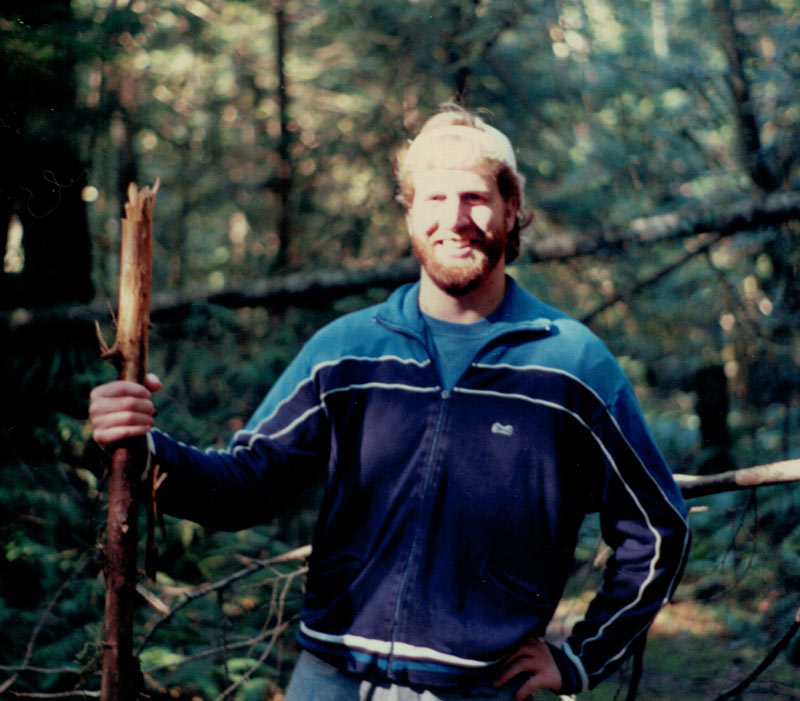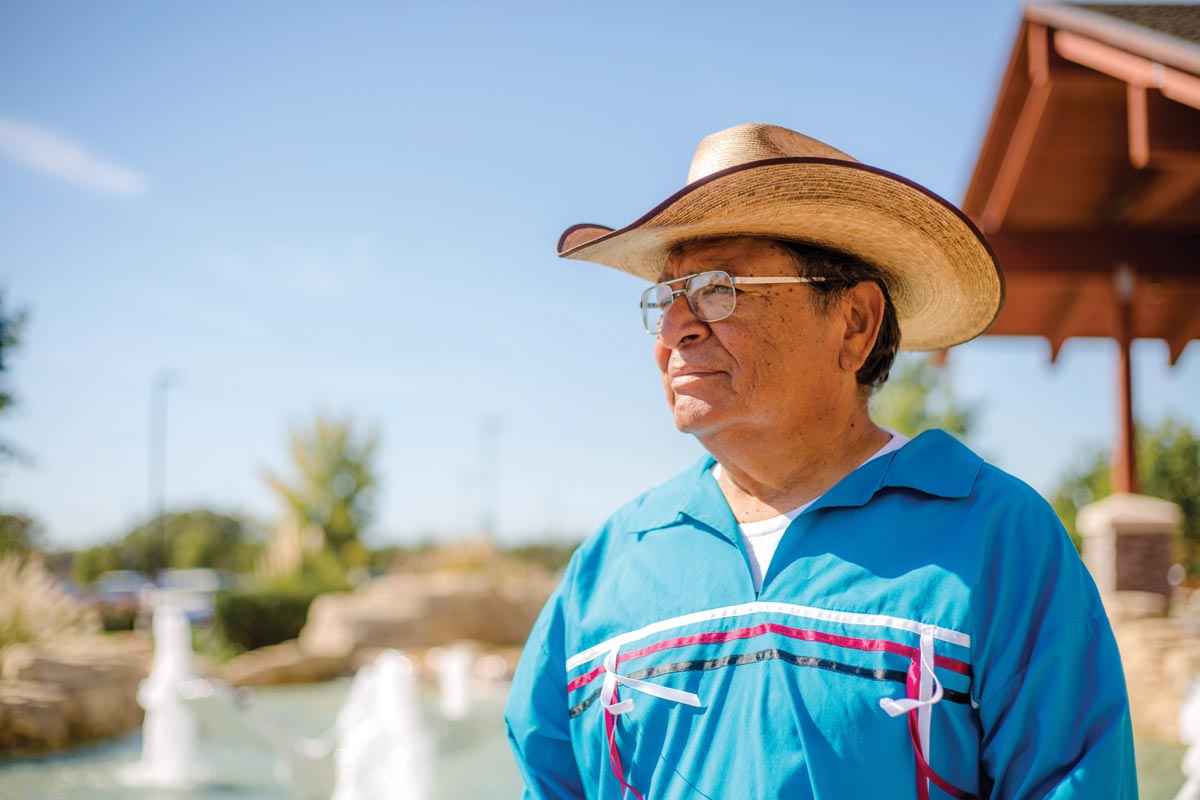“We have a heart for you,” a transplant coordinator told Patrick Weston over the phone as he lay dying at age 52 in a bed at Saint Luke’s Hospital of Kansas City. It was May 25, 2017. A few weeks prior, medical professionals had considered other hearts for Patrick, only to decide that the potential organs weren’t right for one reason or another. But this one was the real deal, and it couldn’t have come soon enough. Patrick’s coronary arteries were thickening, and if he didn’t get a new heart soon, he was going to die.
The Kirksville minister spent the hours before the surgery in prayerful reflection as he contemplated the reality that someone else had to die for him to live. Frenetic activity filled the room as doctors and nurses prepared to open Patrick’s sternum, cut out his heart, and replace it with a new one.
As doctors wheeled him away, his wife Jeannie gave him a simple directive: “Fight.” Although the battle ahead was formidable, Patrick knew he could win it because this was his second heart transplant—a whopping 27 years after the first.
An Unexpected Diagnosis
Patrick Weston grew up in a fishing cabin in O’Fallon and graduated from Fort Zumwalt High School. At age 19, a routine chest X-ray during a military physical led to a diagnosis of congestive cardiomyopathy, a type of heart failure in which the heart does not pump strongly enough. Symptoms didn’t start until shortly after Patrick moved to Seattle around his 22nd birthday. He was put on the heart transplant list. The University of Washington Medical Center sent him home with a beeper that buzzed whenever a heart was available. In six months, it buzzed a couple of times a week, all malfunctions.
Patrick called in every time the beeper buzzed except one night when it went o just as he was sitting down to dinner. He decided to call when he was done eating. And that was the one—a 35-year-old male who had been in a fatal motorcycle accident would be Patrick’s donor.
The First Transplant
Patrick rushed to the Seattle hospital. Although he had grown up going to church, he hadn’t prayed in years. But this night, he called out to God like a soldier in a foxhole. Soon he had tubes running into his groin, feet, and neck. The final IVs needed to go into his arms, but the nurse could not get them in. The effort went on for more than an hour, putting the transplant in jeopardy. The timing between an organ’s removal from the donor and implantation into the recipient is crucial. A heart can only be outside of its original body for so long—the max is about six hours—before it won’t restart in the new one. Patrick read the stress on the face of the man as he struggled to insert the IV.
“I stop him, look at him: You can do this. Just do it,” he says.
Doctors put Patrick on a table that flipped him almost upside down. Blood pooled near his wrists and allowed the nurse to finally insert the IV.
Dr. Margaret Allen, the first woman in history to complete a heart transplant, performed Patrick’s surgery. Patrick says her small hands allowed her to work in small places. This meant his chest cavity didn’t have to be as open as it would have been for a surgeon with large hands, an advantage for his recovery. After the successful surgery, Patrick says he left the hospital with renewed faith. He was determined to not let his being a heart transplant recipient define him in a negative way—he didn’t want to live in fear.
But being a heart transplant recipient did define Patrick— in a positive way: he lived an active and full life to honor the sacrifice of his donor. Before the surgery, Patrick played football at Truman State (then known as Northeast Missouri State University). In Seattle, where he earned degrees in biology and biochemistry at the University of Washington, he spent time with an adventurous group of friends.
“He comes out of the heart transplant, and he goes right back into that life,” Jeannie says. “He’s going up into the mountains; he’s doing all this stuff. I was completely floored. How could you have a heart transplant and then you’re doing all this stuff?”
Cardiologist Daniel Fishbein oversaw Patrick’s treatment after the transplant. He recalled a conversation about Patrick playing in pickup basketball games with college kids and even some players from the Seattle Seahawks NFL team.
“I asked him how he did on the court,” Dr. Fishbein relayed through a hospital spokesman. “His assessment was that he was only behind ‘a half a step’ after the transplant.”

Beating the Odds
A transplant coordinator told Jeannie that 10 years was the median lifespan of a heart transplant recipient. Their relationship was young at the time, and Jeannie wrestled with whether she wanted to continue with a man with such an uncertain future. She was also confused at first about how much his life had changed because of his renewed faith, a faith she gradually came to share.
“I realized, I love this man,” she says. “I love him whether I’m going to be attached to him or not. And if I have 10 years with him, it’s going to be 10 years of loving a good man. That was one of the scariest things I ever faced.”
The Westons moved back to St. Louis in 1993. The medicine cabinet in the house was always full of pills. Patrick had more appointments with his cardiologist than a normal person would, but other than that, he lived a typical life. He and Jeannie had two children, moved to Syracuse, New York, and then returned to St. Louis. Jeannie rode a wave of anxiety as the 10-year deadline neared, but it came and went and receded into the distance. By 2003, Patrick was a successful biochemist at Monsanto. A calling to enter the ministry led him to leave that job and enroll in Covenant Theological Seminary in Creve Coeur, where he received a Master of Divinity degree in 2007. As Patrick marked his 49th birthday in 2014, it occurred to him that he’d had his second heart longer than his first—25 years compared to 24.
“I started thinking of all the things that had happened to me in the years since I had my heart transplant,” he says. “I married a beautiful woman, had two great kids, became a Christian; now, I am a pastor preaching the gospel.”
Patrick is a competitive person, and he wanted to be as strong and fit as he was in his college days as a walk-on football player. His strength came back, he says, but he never quite regained the stamina of his youth. Still, that’s a high bar of expectations, and other than a sharp recurring pain in his chest, he was healthy. His cardiologist in St. Louis, Dr. Paul Hauptman, told him that his case was unusual— few people with heart transplants lived as long as he did and were as healthy as he was.
“Keep doing what you’re doing, because it’s working,” he told Patrick.
But inside Patrick’s chest, danger lurked. Many heart transplant recipients develop cardiac allograft vasculopathy— known as CAV—a thickening of the coronary arteries.
“There’s a general pruning of blood vessels over time,” says Dr. Hauptman, a professor of medicine at Saint Louis University. “It can be silent for an extended period of time until the patient either ends up with a heart attack or heart failure, which is what happened with him.”

A Turn For the Worse
In the summer of 2016, Patrick moved from St. Louis to Kirksville to plant a church for Presbyterian Church in America. Soon he was having trouble walking up the small incline in his driveway. His sitting heart rate soared, and one day Jeannie laid her head on his chest and noticed he was breathing heavily for no apparent reason. The sudden onslaught of CAV symptoms had arrived.
He went to see Dr. Hauptman on Election Day 2016 and spent much of the next six months in and out of the hospital. He was admitted to Saint Luke’s of Kansas City for the final time in April 2017, and they put him on the heart transplant list. His body started to wither, and Jeannie watched as his condition worsened each week. It seemed like his heart was suffocating.
“He lost so much weight,” Jeannie says. “I was watching my husband diminish physically. It was like watching him die. It was horrible.”
The couple’s daughter, AJ, visited frequently. She and Patrick watched Harry Potter and James Bond movies together. Patrick and Jeannie’s son Zach rallied friends and family to pray for his father. Zach graduated from the University of Missouri while Patrick was at Saint Luke’s. Patrick tried to talk the medical sta into letting him leave to attend the ceremony. They refused, but the IT staff set up live-stream coverage of the ceremony in his room. Jeannie was on-site and texted Patrick when their son’s turn to walk across the stage neared. Zach was only on-screen for about two seconds, but his father treasured those two seconds.
When Jeannie prayed about her husband’s health, and when she asked others to pray for him, she deliberately avoided asking God for a new heart. She felt that to do so was to pray for what she wanted, and that might have been contrary to God’s will. Instead, she told God she would trust that he was in control.
Only once, she says, did she pray about a specific sequence of events. It was May 24, 2017, and she had two weeks o from work. That was enough time for Patrick to have the transplant, recover from the surgery, and get home. She arrived at the hospital ready to spend two weeks there. She left Patrick’s room to go back to her car to get her last load of stuff, and as she walked, she prayed that the transplant would happen in that two-week window. Even that prayer pricked her conscience.
“If I’m circumventing your will,” she prayed next, “act like I didn’t even pray it.”
When she got back up to the room, Patrick was on the phone with the transplant coordinator talking about the heart he was about to receive.

Another Second Chance
When doctors removed Patrick’s heart and examined it, they found something curious—a piece of metal wire 0.7 centimeter long sticking out of the right ventricle. That wire had been inside his chest for 27 years. It was probably a “temporary pacing wire” put there as a means to pace the heart if it needed it immediately after it was transplanted. Patrick guesses the wire snapped when doctors removed it in 1990. He wonders if that wire was the cause of the sharp pain he felt over the years because the pain disappeared when that heart was removed. Nevertheless, that first donated heart had served him exceedingly well. According to the International Society for Heart and Lung Transplantation, only 10 percent of heart transplant patients survive as long as Patrick. Fewer still are as healthy with a transplanted heart for as long as he was.
Today, 1½ years after the second transplant, Patrick says he feels better than ever. Last winter, he had his ankle replaced. He says the recovery from that was harder than the recovery from the heart surgery. There was no pain in the recovery from heart surgery, he says, except for when he sneezed, which he says felt like someone blew an M80 in his chest. But the ankle caused him severe pain. That pain is gone now, and it seems like a safe bet that he is one of few Missourians who have had three hearts and three ankles.
As with any heart transplant recovery, Patrick faces myriad potential complications; the odds of something going wrong are elevated slightly because it is his second. But he knows how to handle the medication, the appointments, and other responsibilities that come with such a complicated medical procedure. Patient compliance is a crucial factor when determining whether a person is a good candidate to receive a transplant. The medical professionals on Patrick’s case have lauded his willingness to listen to them and follow their instructions. Patrick figures he made it 27 years with the second heart, so he expects to make it at least that long with the third.
He wrote a letter to the family of his second heart donor to express his gratitude, but he hasn’t heard back from them. He knows nothing about his new heart’s donor— whether it was in a man or woman, young or old, how that person died, or where that person lived. Missouri law says all of that information remains confidential unless the donor’s family agrees to release it. Living every day of his life with gratitude is the best way Patrick knows to say “thank you.” He knows that he could have died 28 years ago and again 18 months ago.
Moving forward, Patrick plans to continue to grow his new church, True Community Fellowship. His place of worship is located inside his home, which has a quirky layout of new parts that have been added on since it was first built—a design Patrick can relate to. Sometimes the faithful parishioners occupy all the couches and chairs in the Weston living room. Sometimes, not so much. But Patrick keeps going regardless. If nothing else, surviving two heart transplants means he’ll never run out of material to enthrall his congregation on Sunday mornings.
“I’ve milked that for illustrations lots of times as a preacher,” he says with a laugh.
Top photo by Isaac Benhesed on Unsplash
Related Posts
Meet the Man Who Hopes to Save the Shawnee Language
“There are deep things you can’t explain in English that you can in Shawnee,” he says. “It’s a spiritual language. Everything means something: the ground, the trees, the relationship of sky, water, rock. My father used to say that if you want help from the Creator, you have to speak with the language you were put here with.”
Meet Missouri Farmers Kalena and Billy Bruce
Meet some of the farmers raising the beef you eat right here in Missouri, plus, we share a recipe for slow-cooker shredded beef.



